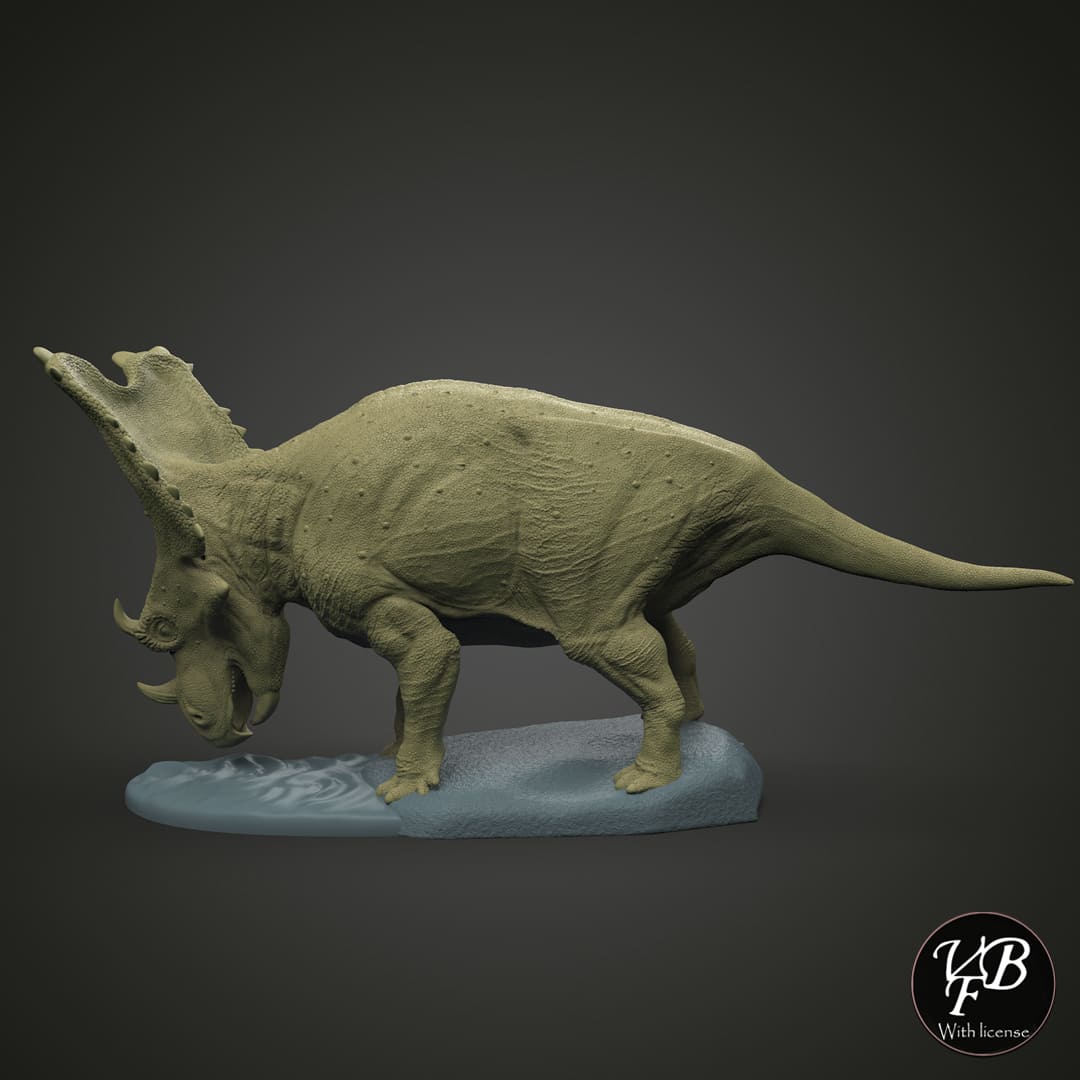
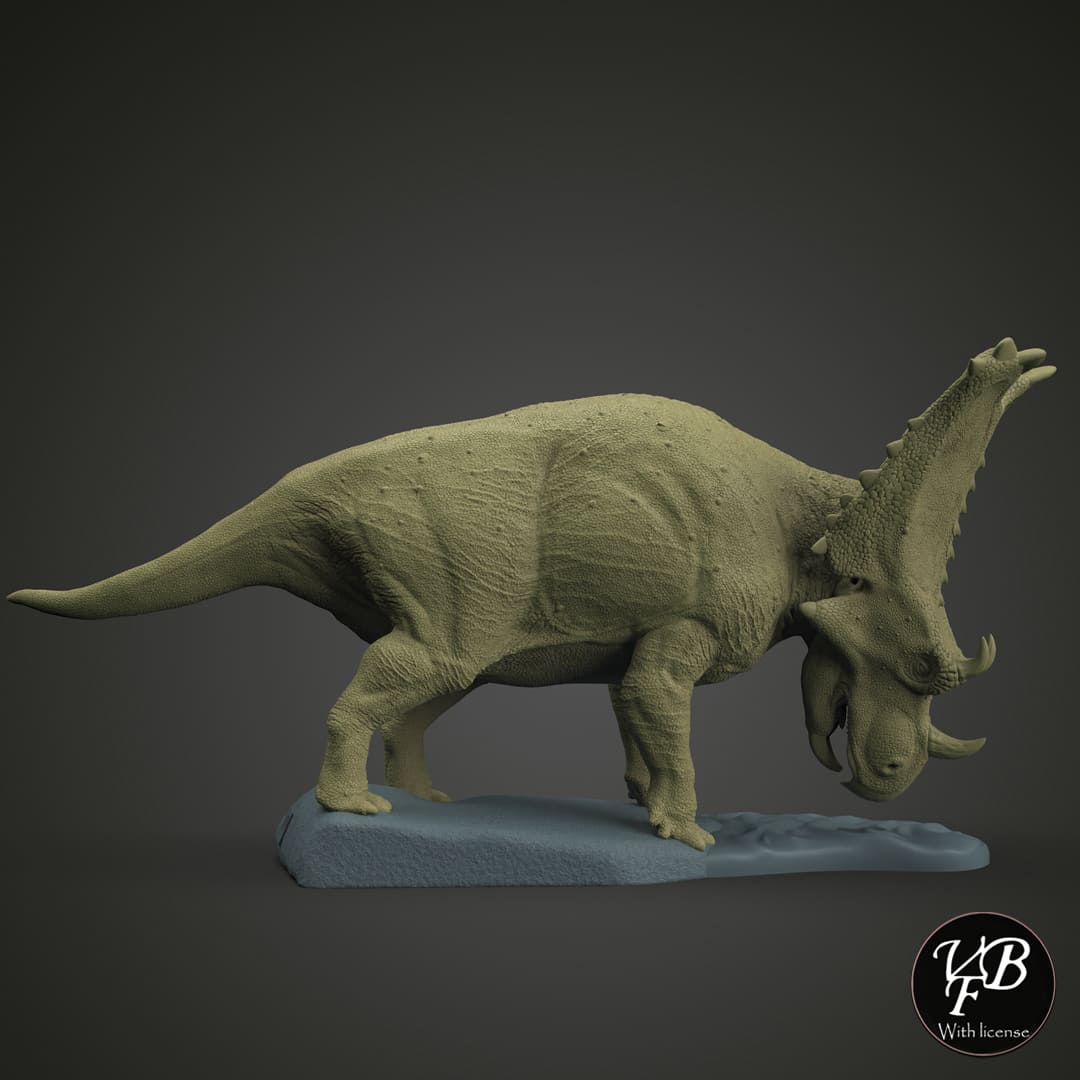

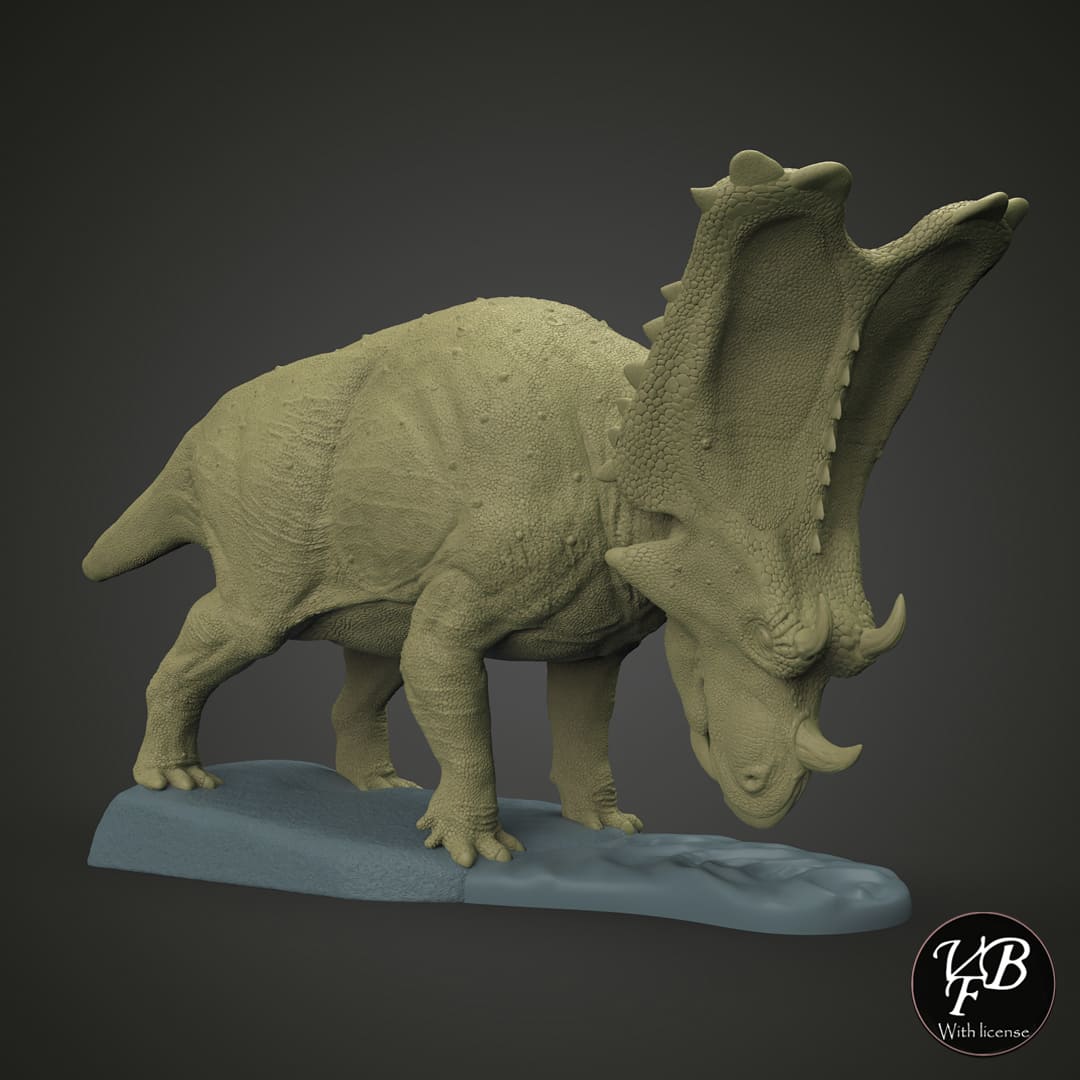
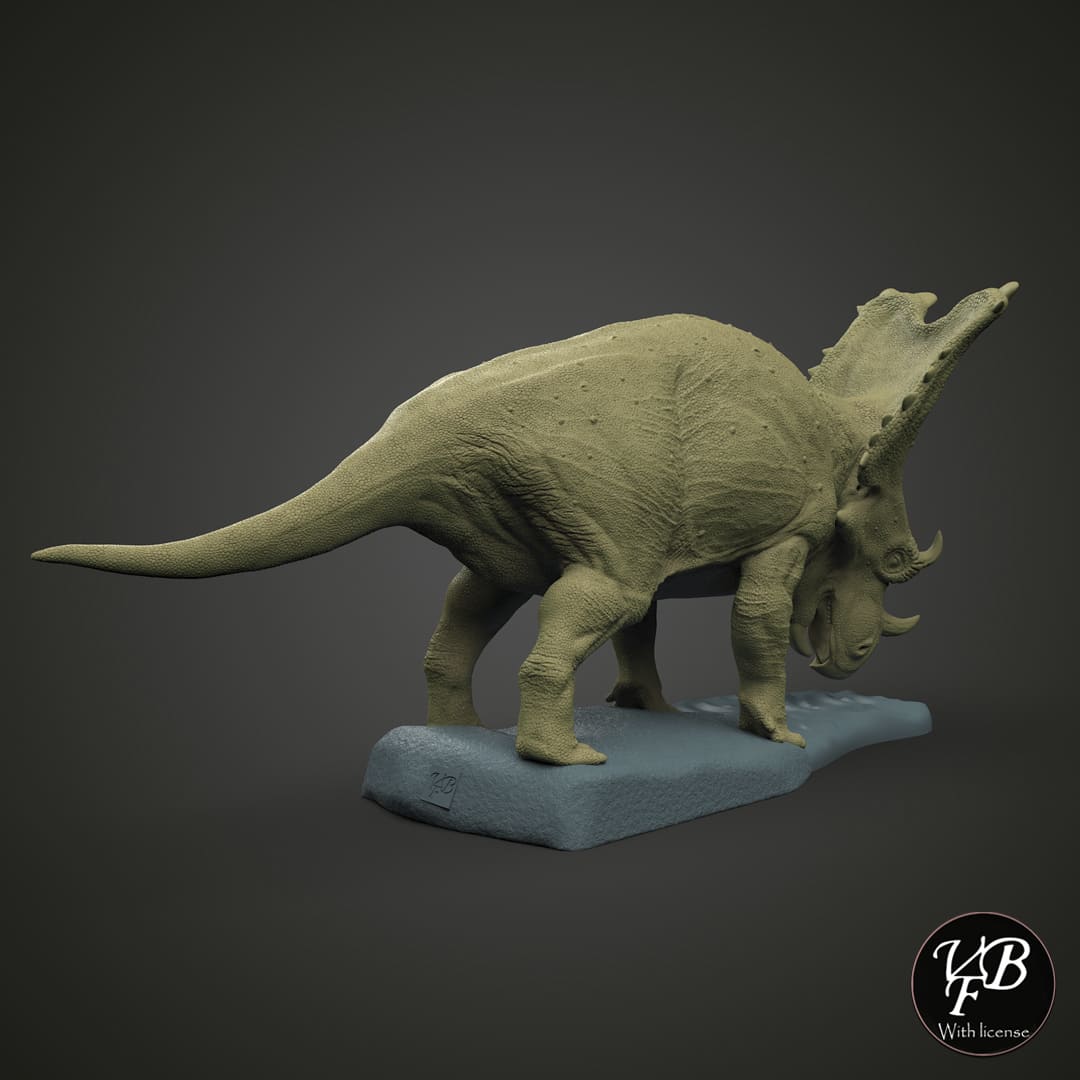
Chasmosaurus russelli
Do you want another scale?
Contact us and we will make it possible!
How will you receive your replica?
In the unprimed and primed variants, you will receive the complete replicas except for the large models, where you will receive an assembly kit.
In the hand-painted variant, the replicas will be delivered complete.
How does the painting service work?
We created a private chat for you where you will have direct communication with our painter , being able to choose your preferred color schemes and follow the hand painting process closely.
Pairs well with

Chasmosaurus russelli
If you have any questions, you are always welcome to contact us. We'll get back to you as soon as possible, within 24 hours on weekdays.
Shipping Information
Visit our shipping policy page to find all the information.
Customer Support
Give us a few details and we’ll offer the best solution. Connect by chat or email.
We are available 24/7.
FAQ’s
Visit our FAQ's page to find answers to common questions.
Contact Us
We'd love to hear from you. We are here to help. Visit our contact page to send us a message.
Product details
Chasmosaurus russelli is distinguished from other species of the same genus by several details in its cranial anatomy. It had a large, elongated steering wheel with large openings, which probably served both for display and defense. The edge of the frill was adorned with small osteoderms, which are bone nodules that added a more ornate appearance. Its horns above the eyes were relatively short and pointed forward, while the nasal horn was small and more rudimentary compared to other ceratopsians.
The body of Chasmosaurus russelli was robust and voluminous, weighing an estimated several tons. It had short, strong limbs, adapted to support its large body mass. Like other ceratopsians, it was a quadruped that moved slowly, grazing on the low vegetation in its environment.
The discovery and study of Chasmosaurus russelli have provided important insights into the diversity and evolution of ceratopsians in the Late Cretaceous. Its fossil remains, found primarily in the Dinosaur Park Formation in Alberta, Canada, allow paleontologists to better understand the morphological variability within the genus Chasmosaurus and the ecology of herbivorous dinosaurs of that era. This dinosaur not only stands out for its spectacular cranial structure, but also for its role in the ecosystem as a large herbivore, possibly being part of large herds that roamed ancient landscapes in search of food.
Approximate measurements of the Chasmosaurus:
- 1:35 scale Two-piece assembly kit
- Length 123mm
- Height 55mm
- Snout-tail length 129 mm
- 1:20 scale Two-piece assembly kit
- Length 215mm
- Height 96mm
- Snout-tail length 225 mm
Information about aftershocks
Collector's item ; Hyper-realistic replica, highly detailed and with a high degree of scientific precision.
Made to scale, prototyped in resin and with a scenic base in most of the models offered. If you like miniatures, both for collecting and for painting, we offer you a wide variety of scale replicas; All of them related to dinosaurs, extinct prehistoric fauna and current fauna.
So if you love dinosaurs and animals as much as we do, this is your favorite store to collect and paint them :)
We are authorized distributors of all the replicas and figures we offer. We use 3D printers with 8K - 14K resolution, and high-quality resins with additives to improve hardness and flexibility, thus offering replicas of impeccable quality.
Different scales will be used to make the replicas (depending on the size of the species), although we are open to making other suggested scales upon request as long as they fit in our printing trays, for which you will have to contact us via email and request the required size.
Replicas are supplied with the option of airbrush priming in dark grey. If you require another colour, please let us know which one you prefer in the box with special instructions for the seller. Without priming, we do not guarantee that the resin will accept paint.
We also offer the option of choosing a professionally painted replica, which is agreed upon throughout its development with the painter, through a private chat available.
Complete replica (one piece): We supply complete replicas in those models that are small, and models that are medium, large or not very bulky, will have the prerogative of being presented as a complete replica or assembly kit as the case may be.
Complete replicas will be supplied separately from their base.
Replica assembly kit: We supply replicas whose models are large, very large or bulky, only with this option.
The indicated replicas (generally composed of base, head, body and tail) will come prepared for the subsequent assembly that will be required by the client, by sanding, putty, adhesive or technique chosen by the client.
All replicas are thoroughly inspected before shipping and will be carefully packaged to prevent damage during transport.
Information about the models
The poses of the models aim to represent each character in the most scientifically viable way, thus revealing the life and customs of prehistoric and modern fauna.
Each character has its own personality and develops in different life scenarios; birth, adolescence and play, hunting, feeding, fighting, courtship, death and many other scenes from their daily life, always from the creative perspective of their designers.
Handmade
All orders are individually prepared on the cutter for subsequent prototyping, obtaining a resin part that will require post-processing by manual and ultrasonic cleaning, support removal, ultraviolet curing, labeling and packaging.
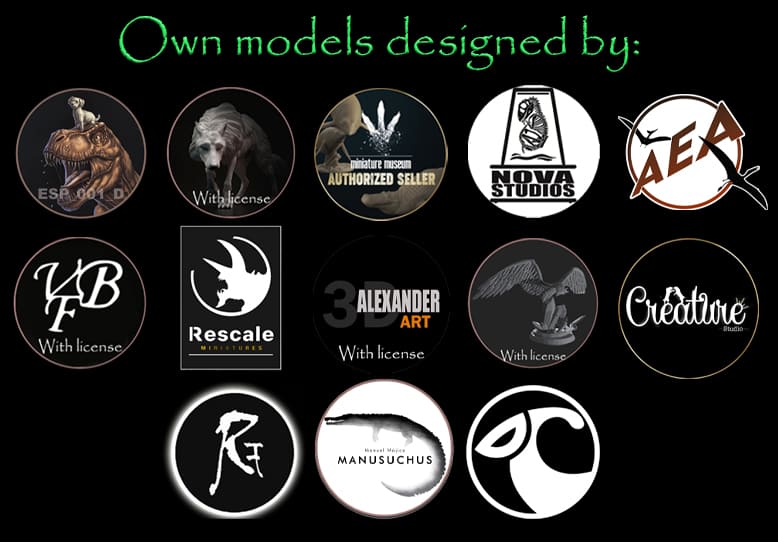
We are authorized distributors
We offer both our own physical replicas and those that have been modeled by many of the best 3D designers, in order to offer you the greatest possible variety.
Frequently Asked Questions
If you have any questions about products, orders or shipping, please read our FAQ page to learn more.

